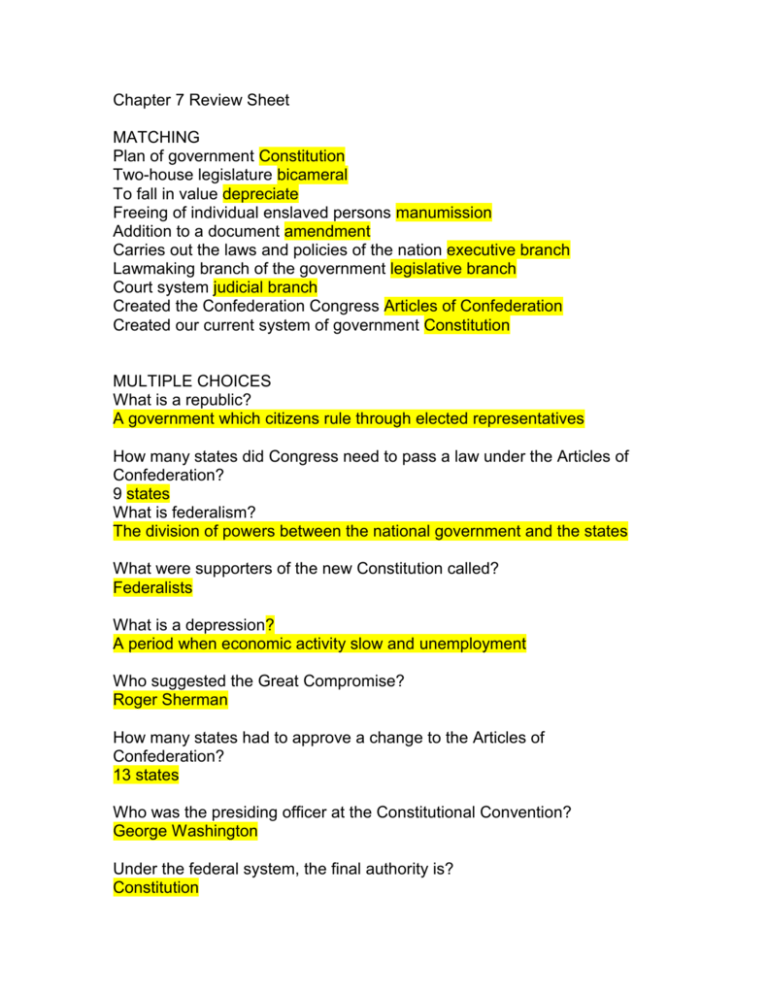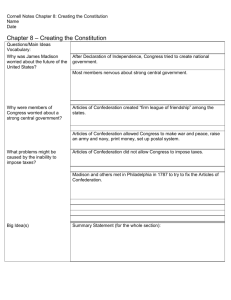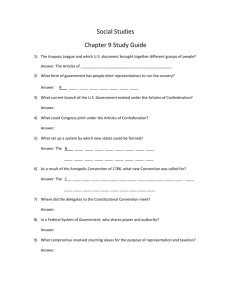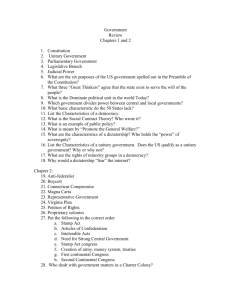Chapter 7 Review Sheet
advertisement

Chapter 7 Review Sheet MATCHING Plan of government Constitution Two-house legislature bicameral To fall in value depreciate Freeing of individual enslaved persons manumission Addition to a document amendment Carries out the laws and policies of the nation executive branch Lawmaking branch of the government legislative branch Court system judicial branch Created the Confederation Congress Articles of Confederation Created our current system of government Constitution MULTIPLE CHOICES What is a republic? A government which citizens rule through elected representatives How many states did Congress need to pass a law under the Articles of Confederation? 9 states What is federalism? The division of powers between the national government and the states What were supporters of the new Constitution called? Federalists What is a depression? A period when economic activity slow and unemployment Who suggested the Great Compromise? Roger Sherman How many states had to approve a change to the Articles of Confederation? 13 states Who was the presiding officer at the Constitutional Convention? George Washington Under the federal system, the final authority is? Constitution What type of legislatures did most states establish? Bicameral SHORT ANSWERS What was the three-fifths compromise? Part of the Great compromise addressed how enslaved persons were to be counted in a state’s population. Southern states wanted to include enslaved Africans in their population count to gain delegates in the House of Representatives. Northern states objected to this idea because enslaved people were legally considered property. Some delegates from Northern states argued that enslaved laborers, as property, should be counted for the purpose of taxation but not representation, However, neither side considered giving enslaved African Americans the right to vote. The committee’s solution was to count three slaves for every five. What are the three branches of government? Describe the responsibilities of each branch. The legislative branch is the lawmaking branch of the government composed of the House of Representatives and the Senate; the powers of congress include collecting taxes, coining money, and regulating trades; Congress can declare war and raise and support armies, it can also make all laws needed to fulfill the functions given to it by the Constitution. The executive branch is headed by the president to carry out the nation’s laws and policies; the president serves as the commander in chief of the armed forces and conducts relations with foreign countries. The judicial branch is the court system of the United States which includes the Supreme Court and any other lower federal courts that Congress might establish; the Supreme Court and the other federal courts that congress might establish; the Supreme Court and the other federal courts hear cases involving the Constitution, laws passed by Congress, and disputes between states.






